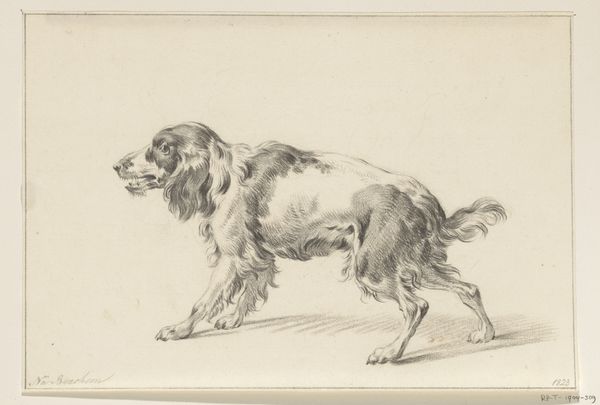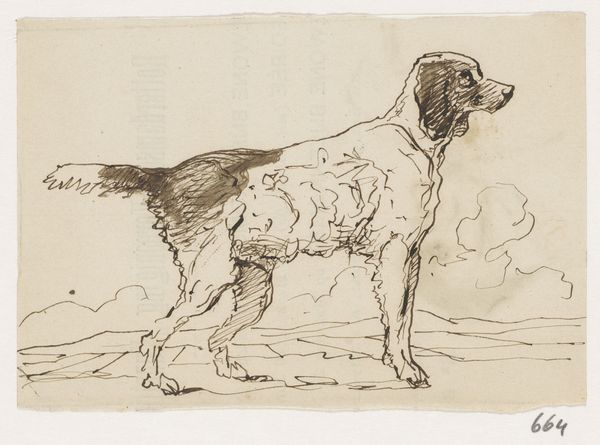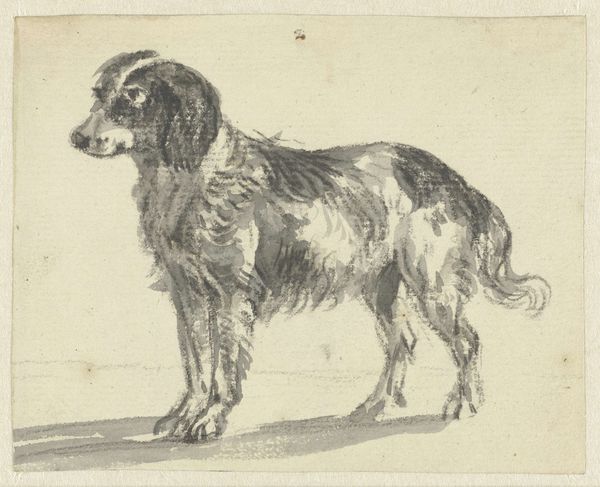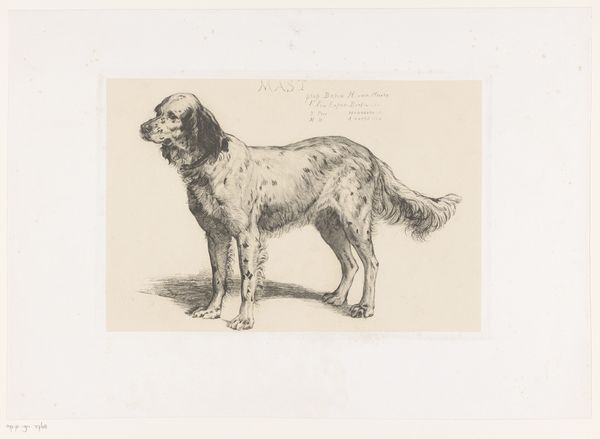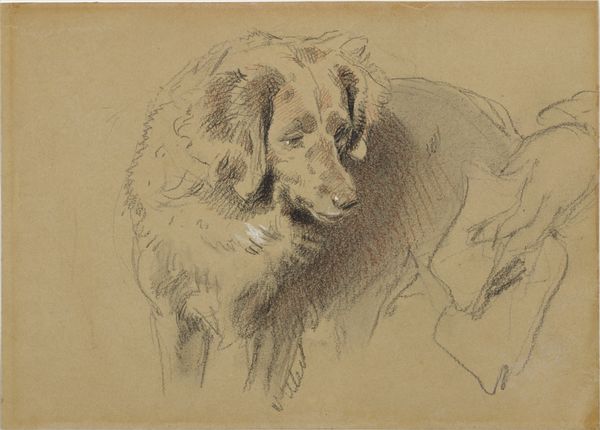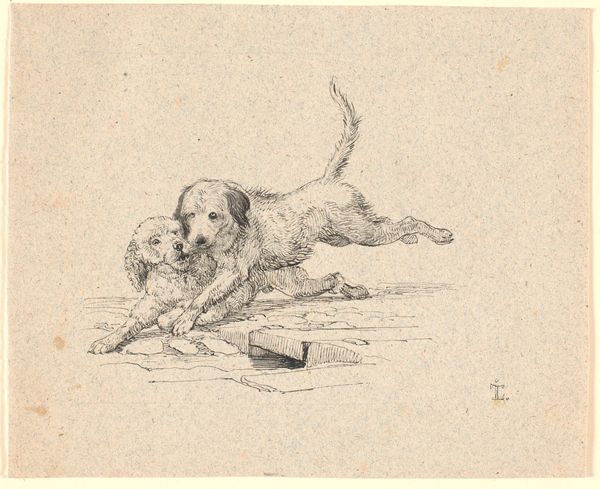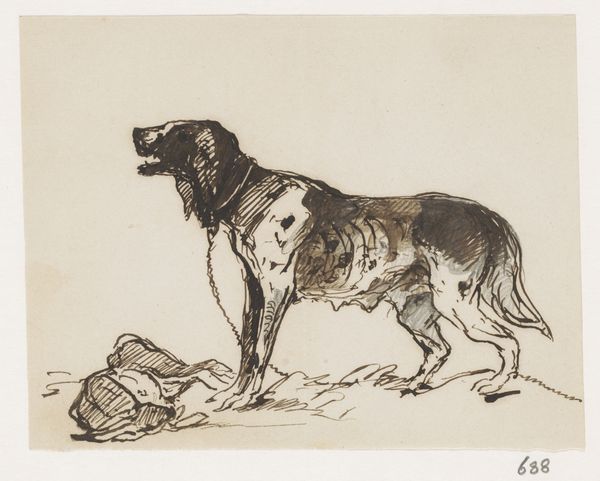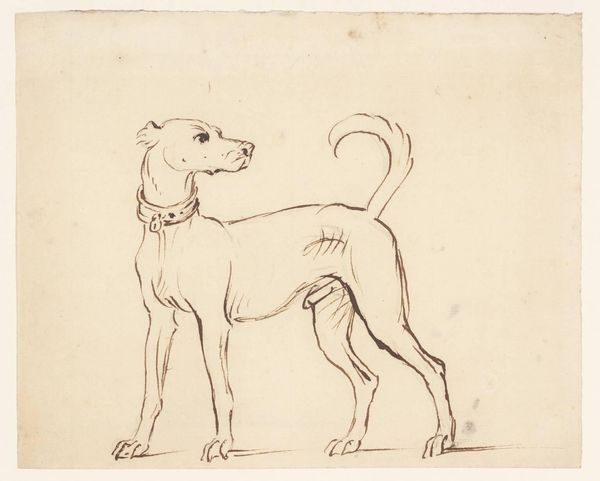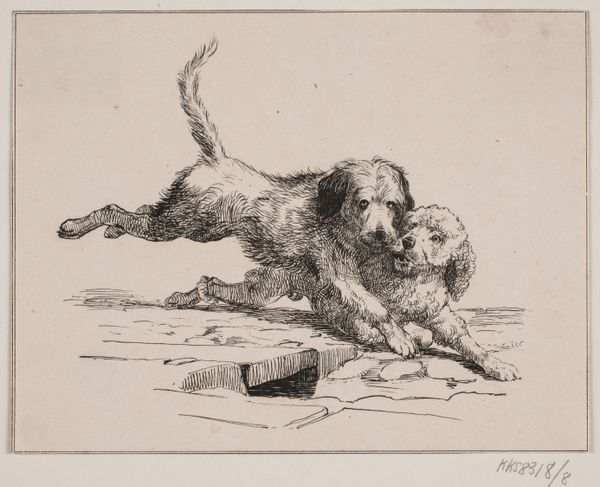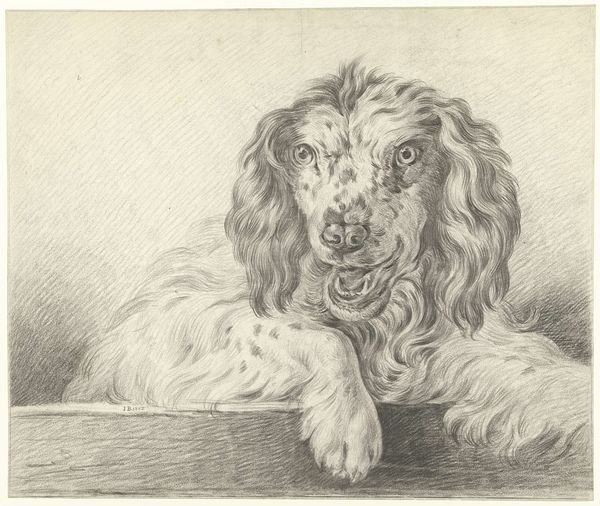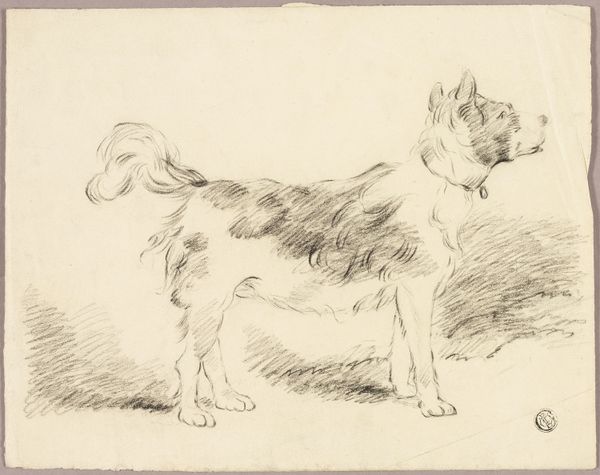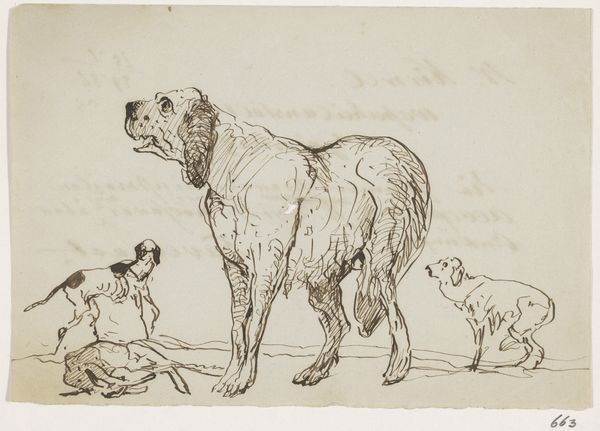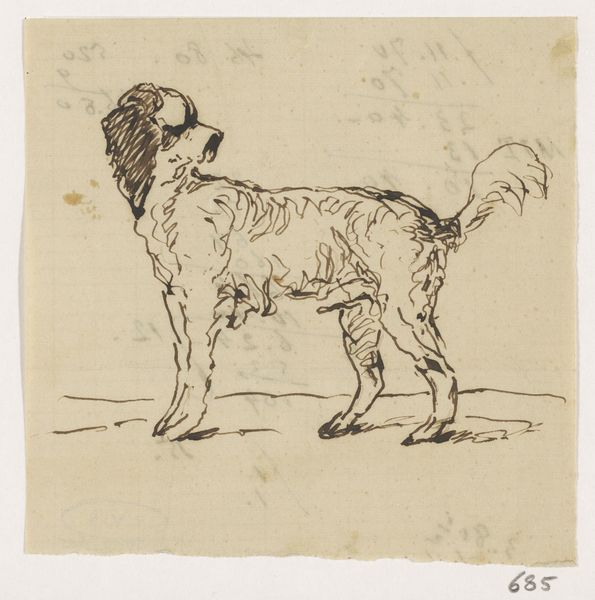
drawing, ink, pen
#
portrait
#
drawing
#
animal
#
dog
#
landscape
#
ink
#
pen-ink sketch
#
pen
#
realism
Dimensions: height 66 mm, width 115 mm
Copyright: Rijks Museum: Open Domain
Editor: Here we have "Engelsche Otterhond," an ink drawing of an otterhound made between 1840 and 1880 by Johannes Tavenraat. The dog's melancholy pose immediately catches the eye. What do you notice about its composition and use of line? Curator: Indeed. Observe how Tavenraat masterfully employs line to delineate the form of the animal. The density and direction of the strokes construct a sense of volume and texture, particularly noticeable in the rendering of the dog's fur. The economy of line, especially in the landscape, suggests a sophisticated understanding of form and space. Notice the almost calligraphic quality of the strokes themselves; they appear fluid and confident. What structural relationships do you perceive between the figure and its implied environment? Editor: I see how the varying line weights give the dog weight and presence, but I wonder if the landscape serves only as a minimal backdrop and contributes less to the overall structural design. Curator: I would challenge you to consider that further. It seems clear the stark simplicity sets off the rich texture of the dog’s coat, and the negative space surrounding the animal amplifies its solid form. The landscape offers contrast that heightens our attention to the materiality of the figure itself. How do you interpret the work as a unified visual field? Editor: I understand that Tavenraat directs our gaze by using empty space, varied textures and weights. This reminds me that seemingly "simple" sketches have their own intricacies. Curator: Precisely. It's through rigorous attention to form, materiality, and spatial relationships that we decipher meaning. This close examination illuminates the artistic intent behind even the humblest of sketches.
Comments
No comments
Be the first to comment and join the conversation on the ultimate creative platform.
